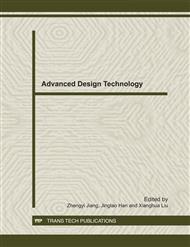p.582
p.586
p.590
p.595
p.601
p.607
p.617
p.625
p.630
An Effective Method for Manufacturing Data Integration Based on Resource Model
Abstract:
During complex manufacturing process, various manufacturing information systems and management information systems are often existing as heterogeneous systems, and manufacturing data is distributed everywhere across the whole value chain of the enterprises. One of the most valuable targets in the integration of these manufacturing information systems is the sharing of enterprise resources which are described in different formats in different information systems. In this paper, meta-resource model is extended using workflow to combine enterprise resources together with business process during manufacturing. Then, an effective method of data integration is proposed based on the meta-resource model. In the proposed method, heterogeneous data is encapsulated in unified format of resource and binding with workflow so that data resources could be accessed according to the business process of manufacturing. Finally, case study shows that the resource-based data integration approach is more robot and flexible than traditional data integration method, especial under the environment of complex manufacturing.
Info:
Periodical:
Pages:
601-606
Citation:
Online since:
December 2011
Authors:
Price:
Сopyright:
© 2012 Trans Tech Publications Ltd. All Rights Reserved
Share:
Citation:


